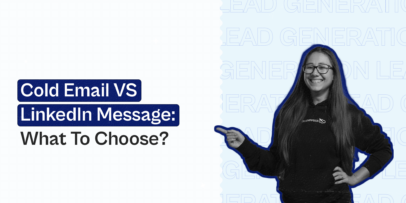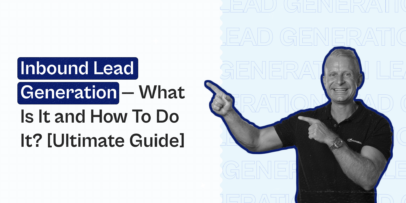How To Measure Lead Generation — KPIs, ROI, and Metrics To Follow
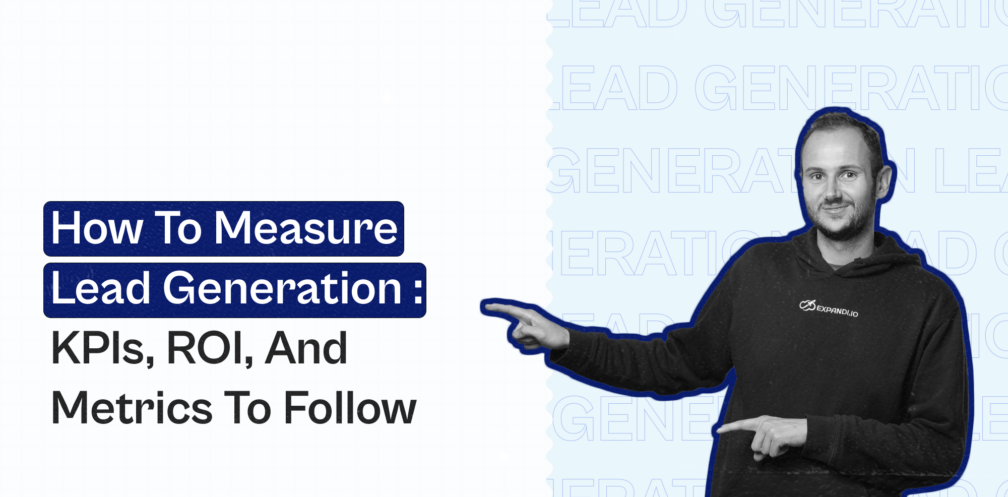
Research by Sales Insights Lab on 400 salespeople shows that only 23.4% of sales reps exceeded their quota last year. Additionally, 54% of sales reps think it’s harder to attract new prospects than it was five years ago.
What do these statistics tell us?
It’s now more important than it’s ever been to measure your lead generation efforts. If you don’t:
- You will spend more money than you need to
- You will waste time
- It will be harder to generate leads
- You may continue bad lead generation practices that aren’t serving you
- You will lose leads to a sales team with data-driven strategies
Want to know how to measure lead generation? This article will cover 19 KPIs to use.
Here’s what we’ll cover in detail:
Lead generation metrics and KPIs
Cold email outreach and sales KPIs
Email deliverability rate
What it is:
Your email delivery rate (also known as “email acceptance rate”) is how successfully you got your email into your recipients’ inboxes.
Why it’s important:
There is a 0% chance your recipients will read your emails if they don’t make it into people’s inboxes. Tracking your email delivery rate helps ensure your emails make it to the right destination.
How to measure it:
Your email deliverability rate is calculated with this formula: (emails delivered / emails sent) x 100.
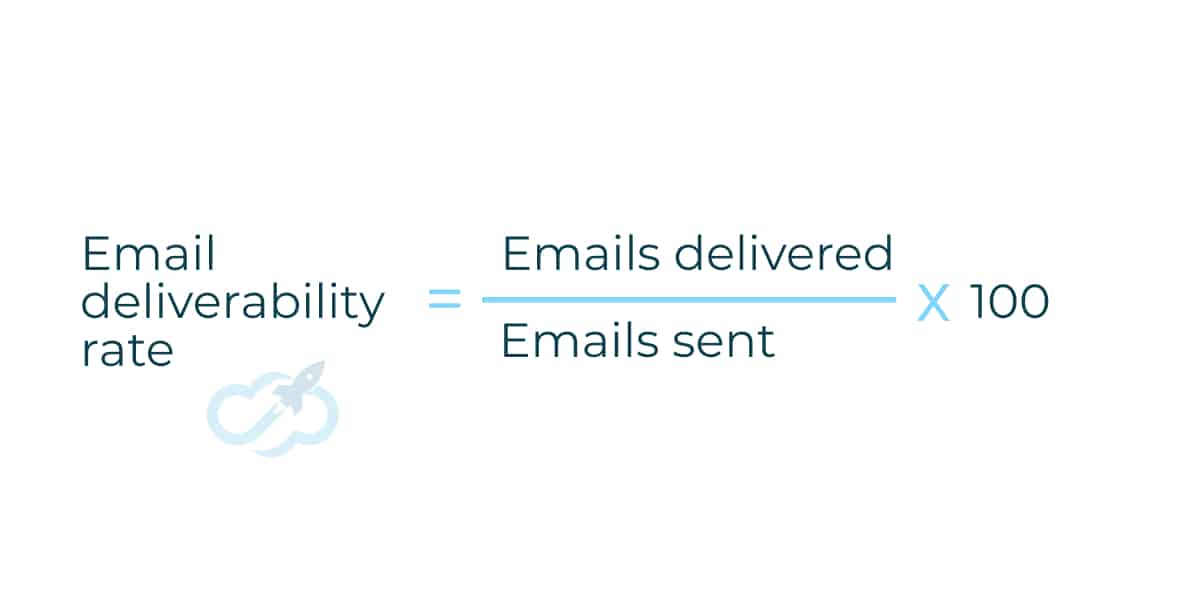
Email open rates
What it is:
Your email open rate (or “click-to-open rate”) tells you how many people opened your email after seeing it in their inbox.
Why it’s important:
Many factors, including your subject line, email timing, and reputation among your customers and leads, influence your open rate.
A high email open rate indicates your marketing is grabbing people’s attention and a low email rate indicates your emails aren’t.
Open rates change across industries, but assuming you’re personalizing your emails, you should aim for an open rate of 70%.
How to measure it:
Your open rate is calculated with this formula: (number of emails opened / number of delivered emails) x 100.
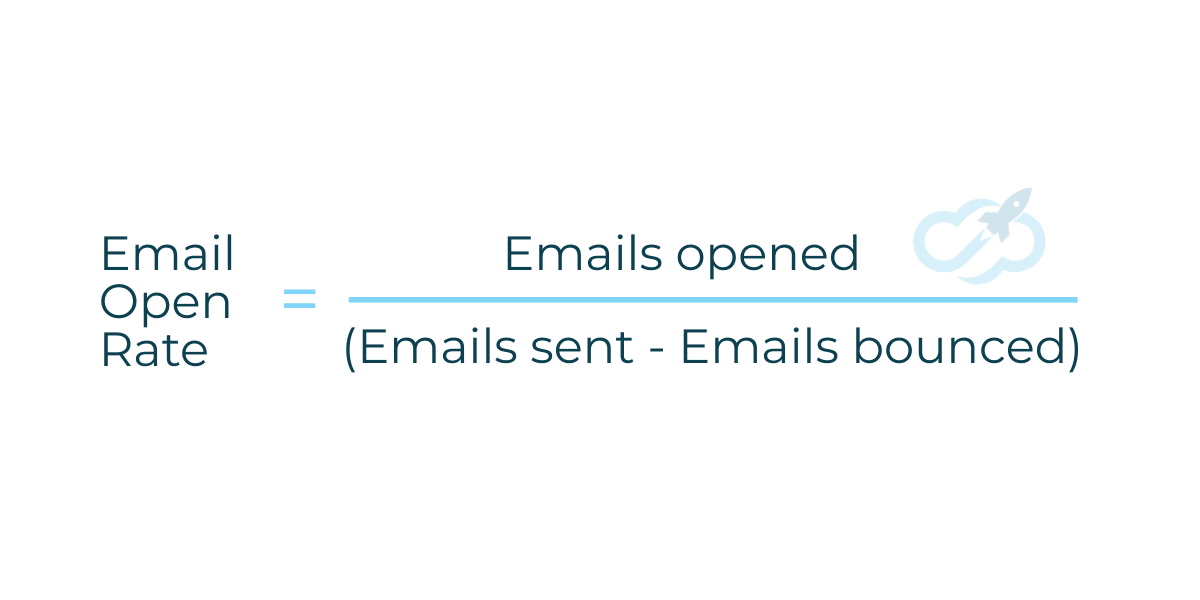
Reply rates
What it is:
Your reply rate is the percentage of recipients that reply to your outreach email.
Why it’s important:
Your reply rate tells you how effective your outreach emails were. A high reply rate indicates your outreach email inspired recipients’ to the point they responded, so you should re-use the strategies you employed.
How to measure it:
Your reply rate is calculated with this formula: (number of unique responses / number of successfully delivered emails) x 100.

Spam and bounce rates
What it is:
Your spam rate is the percentage of emails that land in recipients’ spam folders.
Your bounce rate is the percentage of emails that bounce because of the recipients’ email addresses. There are two types of bounce rates: hard and soft (learn more about them here).
Why it’s important:
Your spam rate tells you how often your emails trigger spam filters. If your spam rate is high, you should investigate why — often, keywords, your sender reputation, or a low engagement rate are to blame.
Your bounce rate tells you how often you send emails to incorrect email addresses. The average bounce rate is 2%.
How to measure it:
Your spam rate is measured with this formula: (number of spam complaints / number of emails delivered) x 100.
Your bounce rate is measured with this formula: (number of bounced emails / number of emails sent) x 100.

Reply to discovery call rate
What it is:
This metric tells you how often a response to an outreach email leads to a discovery call.
Why it’s important:
Tracking your reply to discovery call rate helps you assess your lead nurturing efforts’ effectiveness.
A high rate can also indicate you are targeting the right Sales Qualified Leads (SQLs), as your leads are pursuing your offering.
How to measure it:
Your reply to discovery call rate is calculated with this formula: (number of discovery calls booked / number of email replies) x 100.
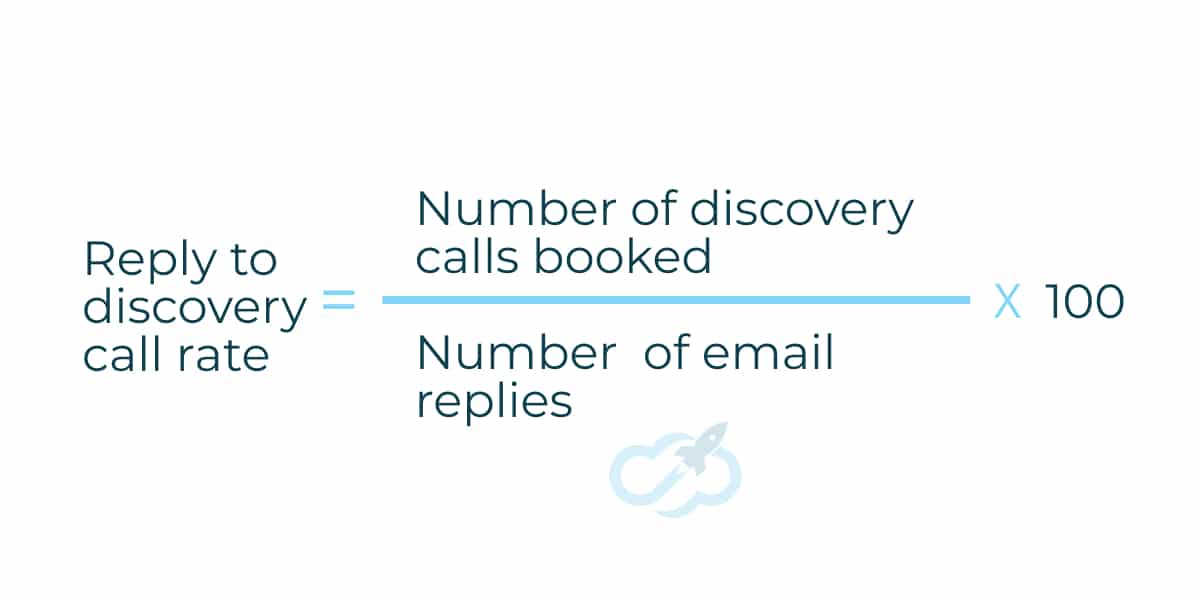
Demo booked to deal closed rate
What it is:
This metric tells you how often demo bookings lead to a closed sale.
Why it’s important:
A high demo booked to deal closed rate indicates your demos are highly effective in engaging with leads and persuading them to purchase your offering.
A low demo booked to deal closed rate indicates you need to tweak your demo strategy so that it converts more leads.
How to measure it:
You can measure your demo booked to deal closed rate with this formula: (number of closed deals / number of demo bookings) x 100.
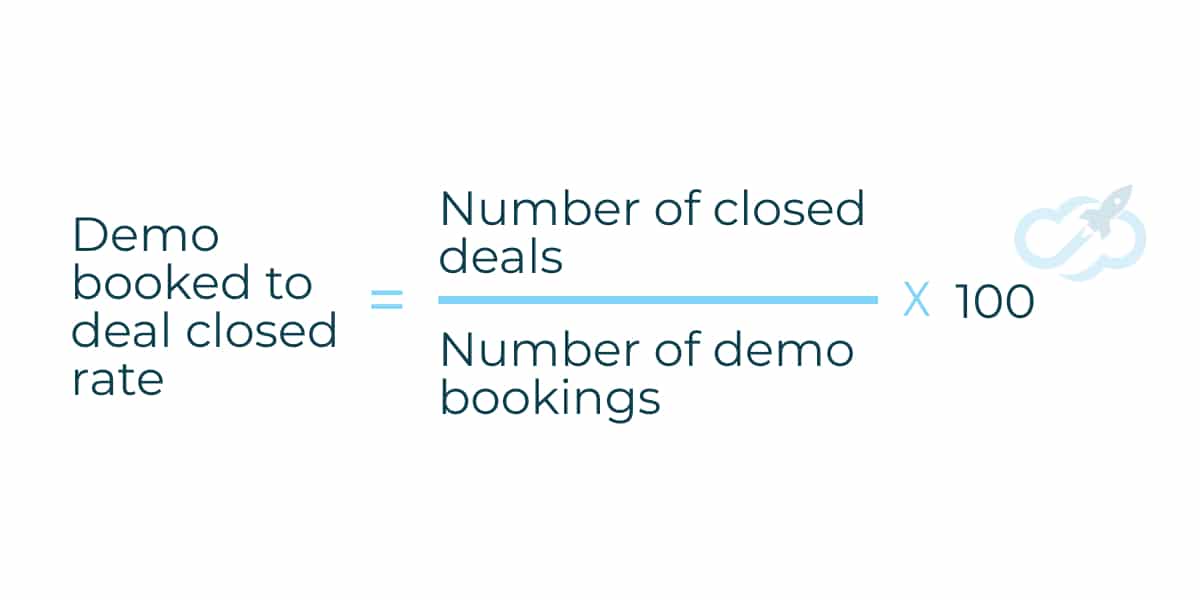
Demo booked to deals lost percentage
What it is:
This metric tells you how often leads who book a demo call leave your sales funnel without purchasing your offering.
Why it’s important:
A high demo booked to deals lost percentage indicates your demo strategy isn’t working as well as it should be. It might be that:
-
- You are targeting the wrong leads (like Marketing Qualified Leads (MQLs) instead of SQLs)
-
- Your demo isn’t engaging and persuasive enough
-
- Your demo doesn’t address leads’ pain points and motivations
How to measure it:
You can calculate your demo booked to deals lost percentage with this formula: (number of deals lost / number of demo bookings) x 100.
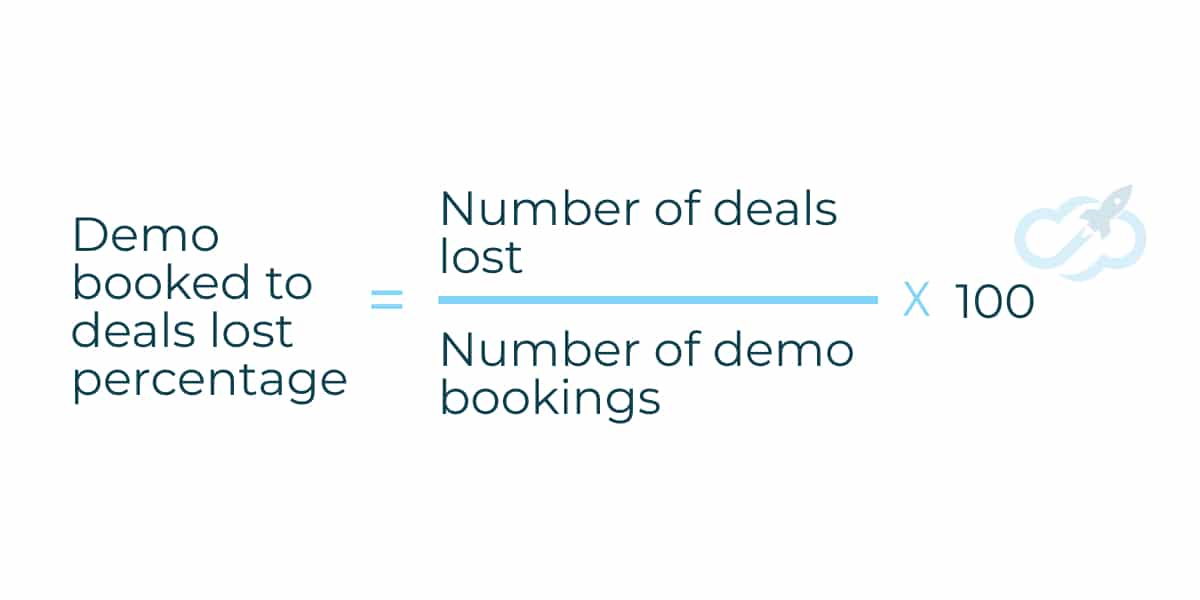
LinkedIn outreach metrics and KPIs
Connection request acceptance rate
What it is:
This metric tells you how often leads accept your connection requests on LinkedIn.
Why it’s important:
A high connection request rate indicates you are:
-
- Targeting the right leads (as those who don’t meet your Ideal Customer Profile (ICP) are unlikely to accept your requests
-
- Portraying yourself as trustworthy and reliable (as leads wouldn’t accept a connection request from someone they perceive as spammy)
-
- Piquing leads’ interests
A low connection request rate indicates your LinkedIn lead generation strategy needs tweaking.
How to measure it:
Your connection request acceptance rate is measured with this formula: (number of connection requests accepted / number of connection requests sent) x 100.
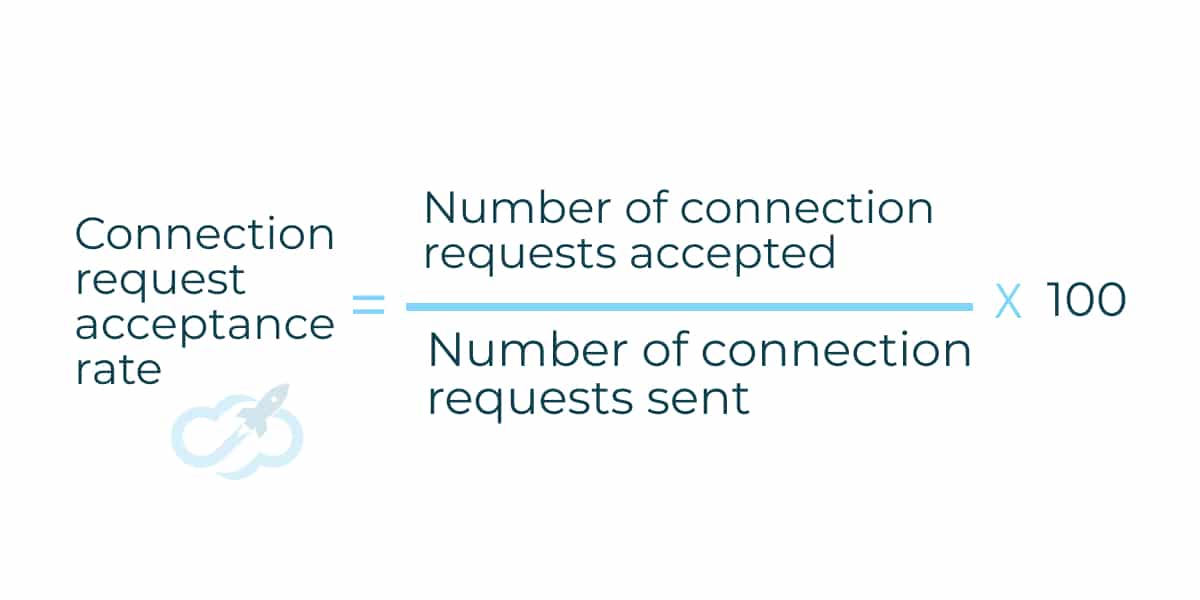
Accepted connection request to reply rate
What it is:
This metric tells you how often leads who accept your connection request reply to your outreach efforts.
Why it’s important:
A high accepted connection request to reply rate indicates leads are progressing through your sales funnel — so your LinkedIn lead generation campaign is effective.
A low rate indicates your connection requests and value propositions fail to capture leads’ attention and curiosity.
How to measure it:
Your accepted connection request to reply rate is calculated with this formula: (number of replies / number of connection requests) x 100.
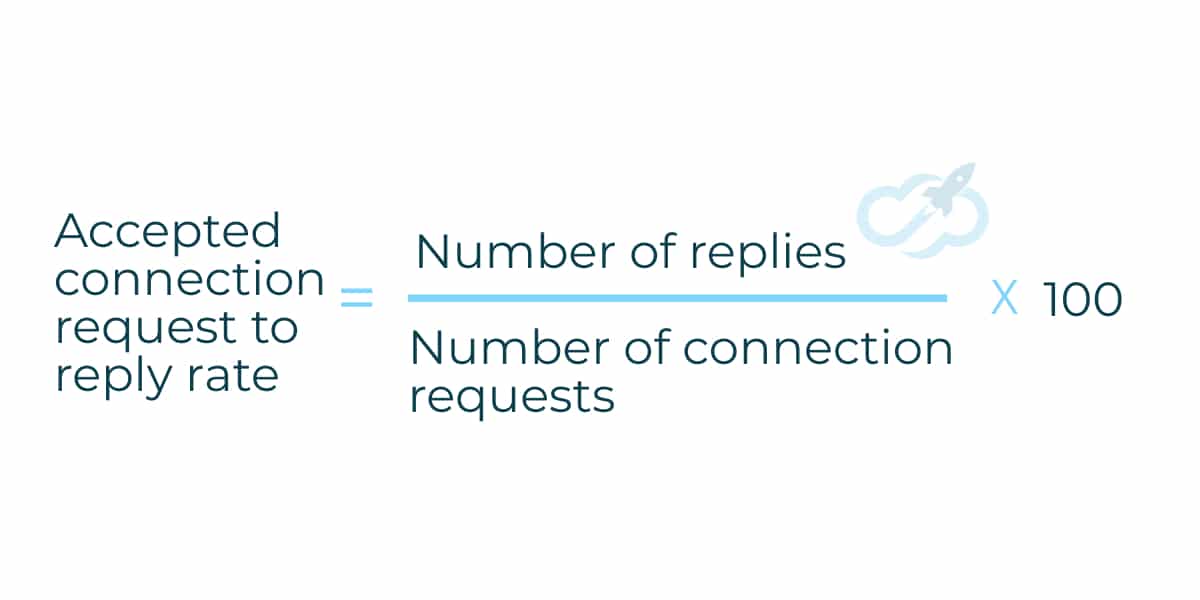
Reply to disco/demo booked rate
What it is:
This metric tells you how often your leads reply to requests for a demo booking.
Why it’s important:
A high reply to demo booking rate indicates leads are seeing your booking request and responding to it (either accepting or declining). While it’s best to get an acceptance, a response of any kind means leads are interested enough to engage with you.
A low rate indicates your requests are not effective and/or lost in recipients’ inboxes.
How to measure it:
You can measure your reply to demo booking rate with this formula: (number of responses to demo booking requests / number of demo booking requests sent) x 100.
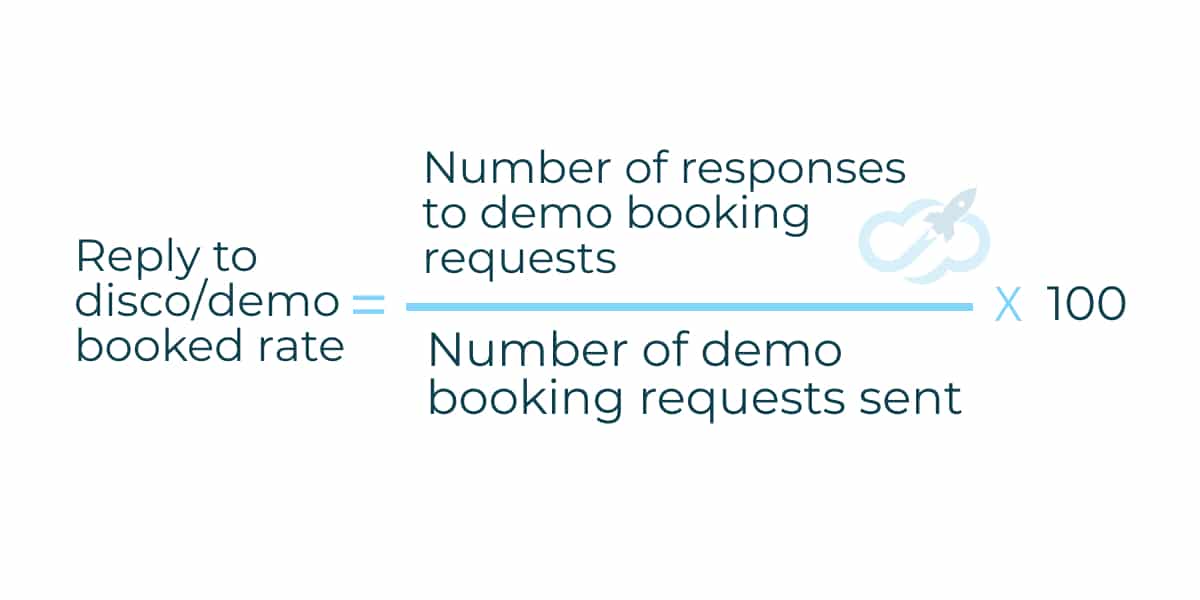
Read: 5+ LinkedIn Lead Generation Strategies To Get 500+ Leads
Fiscal KPIs
Return on Investment (ROI)
What it is:
Your ROI shows how much profit an investment (like LinkedIn advertising) generated.
Why it’s important:
Measuring your ROI tells you if a strategy was “worth it.” A positive ROI means you made a profit, and a negative ROI means you didn’t make a profit.
Your ROI can also:
-
- Help you compare investments to each other
-
- Help you compare investments in different periods (month-on-month, year-on-year, etc.)
-
- Establish a benchmark for future investments
-
- Help you justify your investment to higher-ups and internal stakeholders
How to measure it:
You can calculate your ROI with this formula: ((amount gained – amount spent) / amount spent ) x 100.
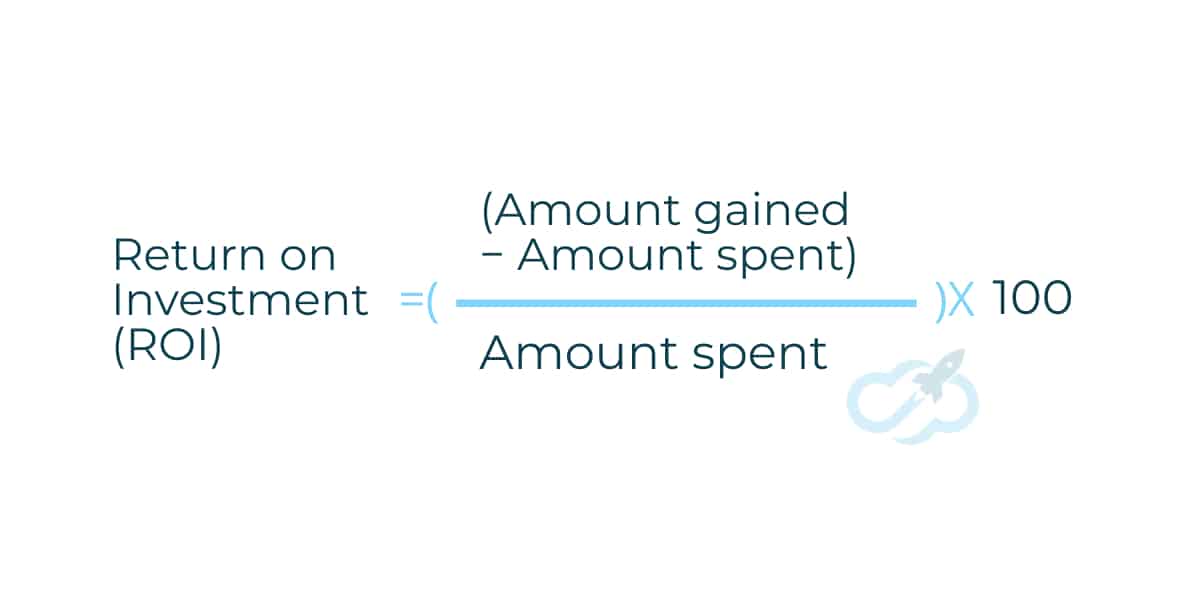
Average Revenue Per Customer (ARPC)
What it is:
Your ARPC tells you how much each customer spent on your offering on average. Usually, you calculate ARPC over a long-term period, like a month, quarter, or year.
Why it’s important:
Your ARPC can help you:
-
- Assign a fiscal value to each customer
-
- Work out how much is reasonable to spend on outreach/nurturing
-
- Identify if you should invest more in cross-selling and up-selling (for example, if your ARPC was low)
-
- Identify if you should pursue new customers (for example, if your ARPC was high)
How to measure it:
You can measure your ARPC with this formula: total revenue / total number of customers.
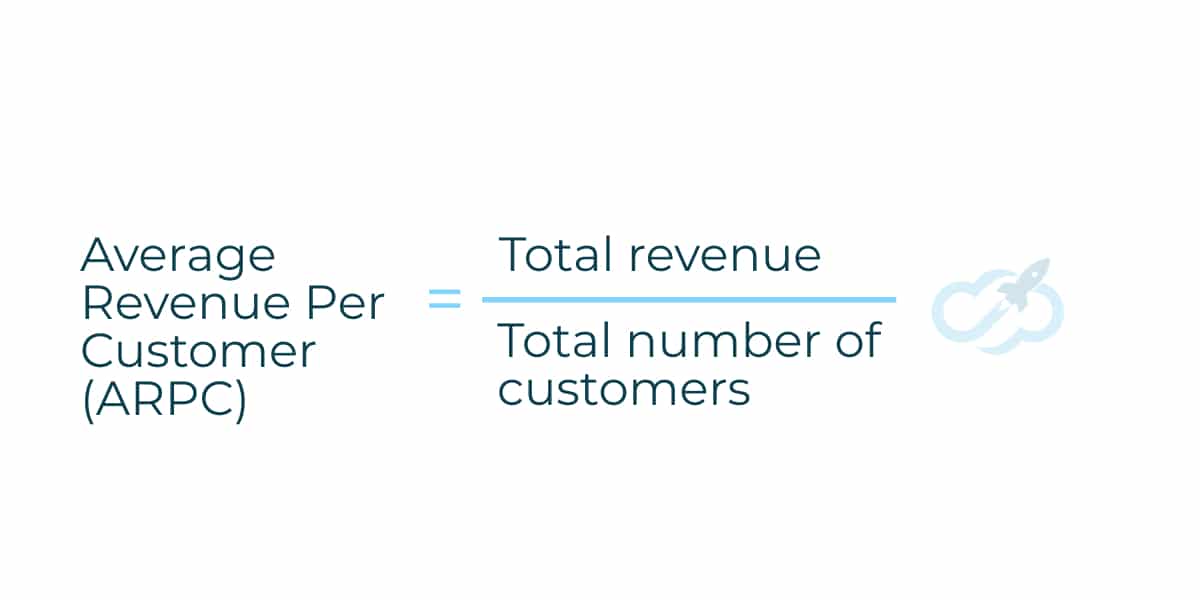
Customer Acquisition Cost (CAC)
What it is:
Your CAC is how much money it costs you to acquire customers on average.
Why it’s important:
A low CAC indicates that your marketing and sales tactics are effectively moving leads through your LinkedIn sales pipeline. A high CAC indicates your marketing and sales practices need some tweaking.
How to measure it:
You can measure your CAC with this formula: (total marketing cost over a set period + total sales cost over a set period ) / the number of new customers acquired over a set period.
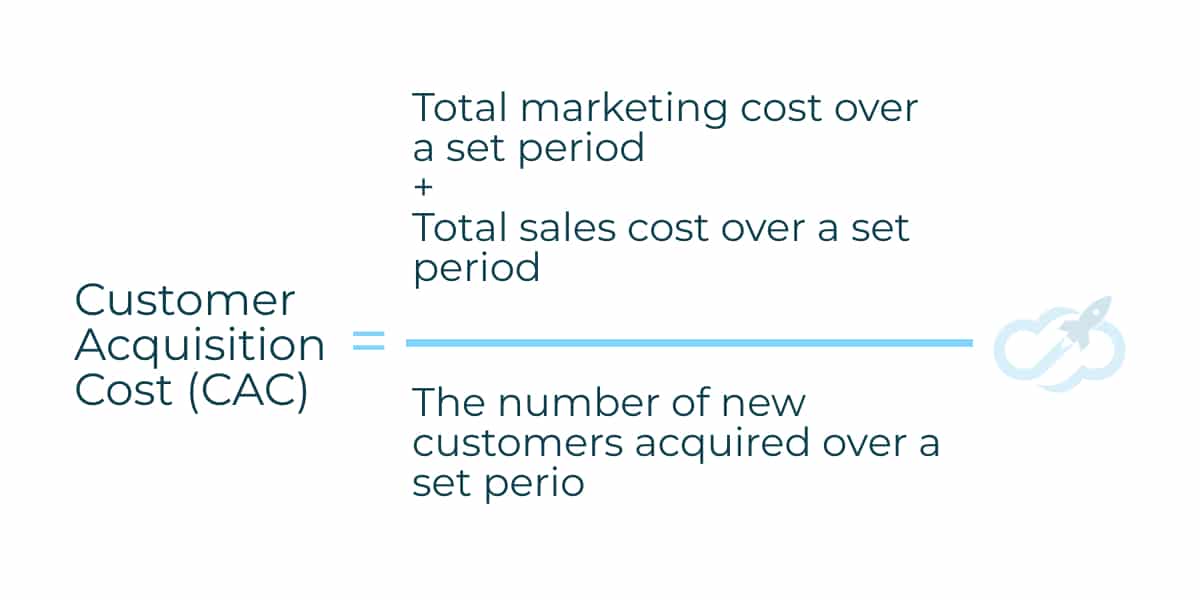
Cost Per Click (CPC)
What it is:
Your CPC tells you how much your organization spent to get each click on your website, social media post, lead magnet, Paid-Per-Click (PPC) ad, or piece of marketing.
Why it’s important:
In the context of PPC ads, a high CPC indicates a keyword is highly sought after by advertisers. High CPC keywords often have a high Keyword Difficulty (KD) and a lot of traffic.
Tracking your CPC helps you project your total advertising costs and plan your strategy accordingly. Monitoring it also helps you spot sudden fluctuations that indicate you need to revisit your marketing strategy.
How to measure it:
You can measure your CPC with this formula: total amount spent / total measured clicks.
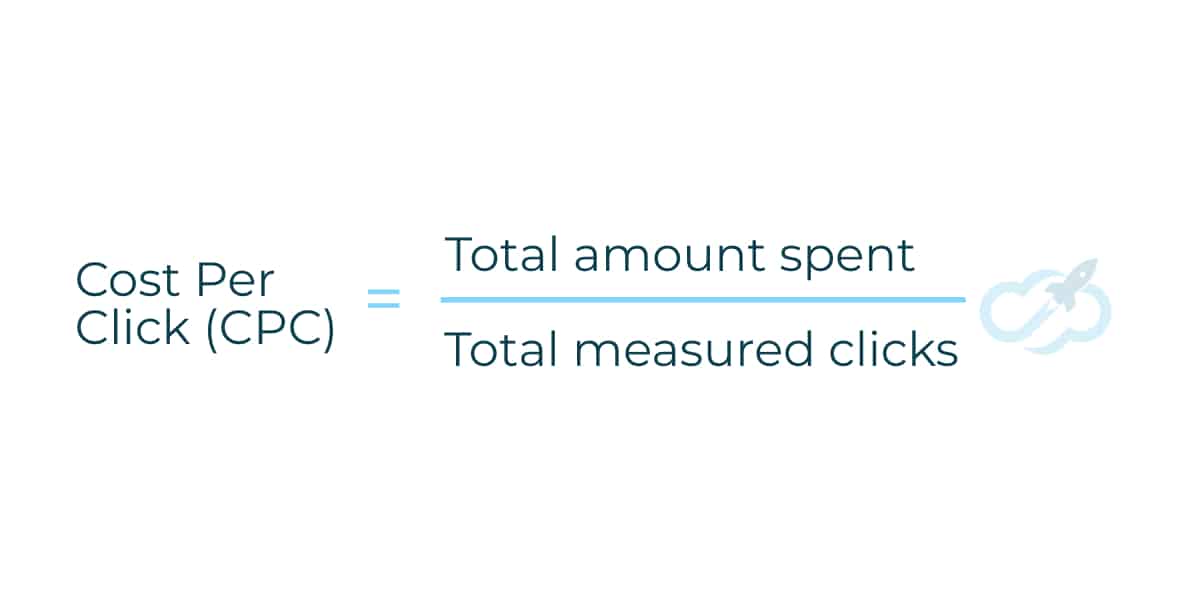
Cost Per Lead (CPL)
What it is:
CPL tells you how much you spent to acquire each new lead.
Why it’s important:
A high CPL indicates your sales funnel is not particularly effective, and leads need lots of investment to convert. A low CPL indicates a strong sales funnel.
How to measure it:
You can measure your CPL with this formula: total amount spent on lead acquisition / total leads attributable to acquisition efforts.
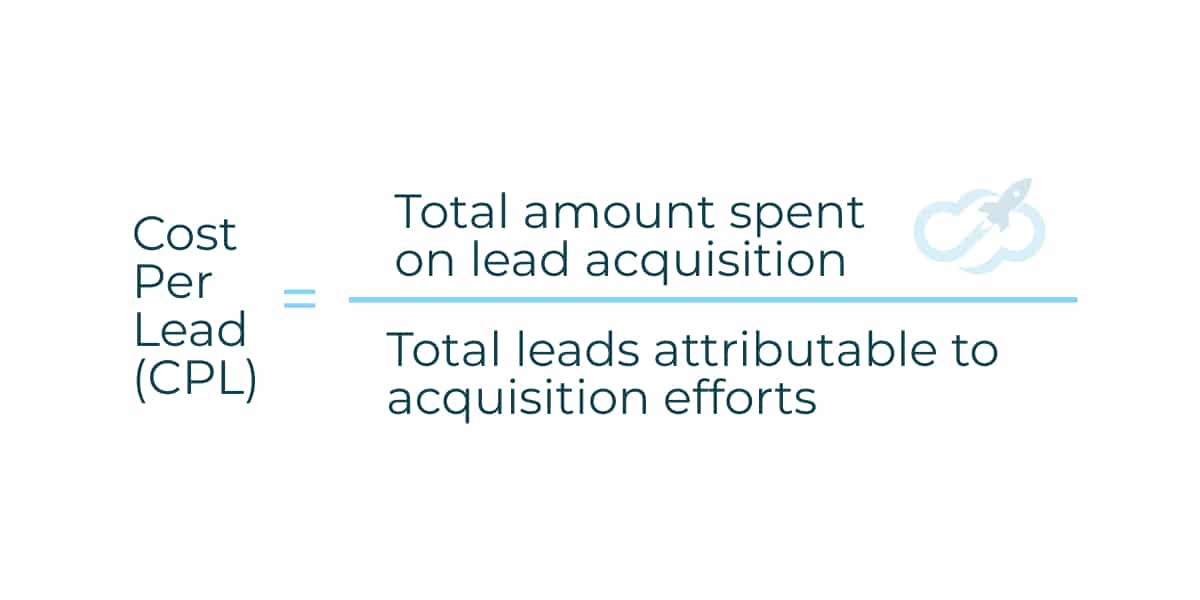
Customer-focused KPIs
Customer Lifetime Value (CLTV)
What it is:
Your CLV is how much revenue you got from each customer across their lifetime on average.
Why it’s important:
A high CLV indicates that your product fits its market, your customers are loyal, you are providing a good customer experience, and you are getting recurring revenue from customers.
Tracking your CLV can also help you spot sudden fluctuations that indicate a change in the market, customers, or your lead generation performance.
How to measure it:
You can measure your CLV with this formula: average order value x purchase frequency rate x average customer lifetime.
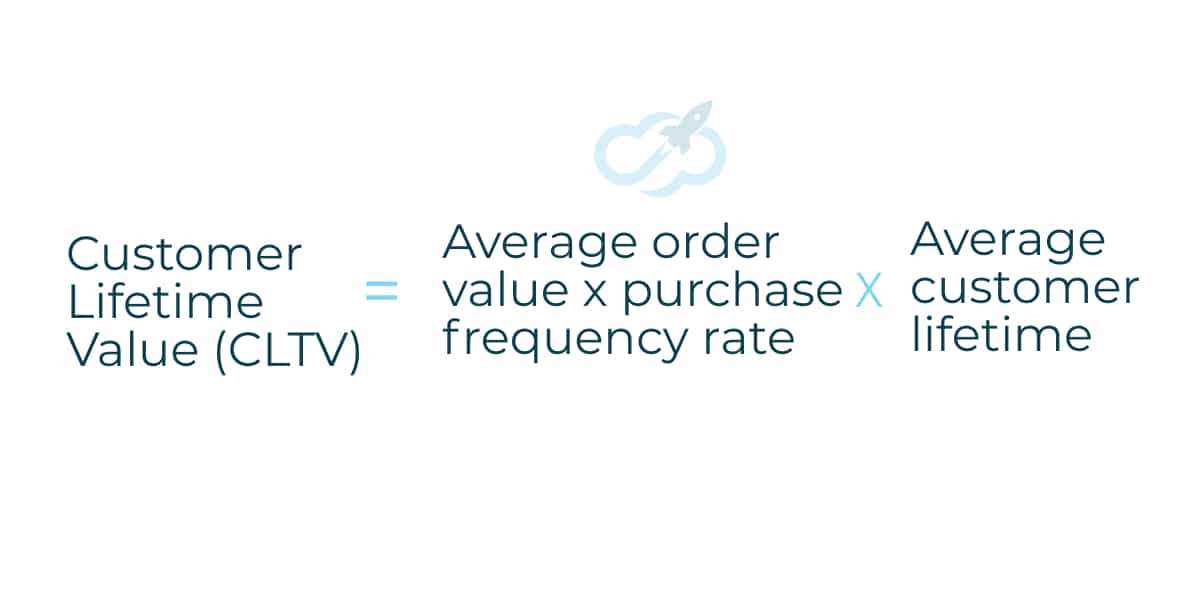
Performance metrics
Click-Through Rate (CTR)
What it is:
Your CTR is how often people who see a piece of marketing click on it. This piece of marketing could be your website, Call To Action (CTA), ad, etc.
Why it’s important:
Your CTR measures engagement. A high CTA indicates you are piquing leads’ interest and persuading them to click. A low CTA indicates the opposite.
How to measure it:
You can measure your CTR with this formula: (total clicks / total impressions) x 100.

Conversions by channel
What it is:
Conversions by channel tell you how many leads from each marketing channel convert into customers.
Why it’s important:
Tracking your conversions by channel helps you compare progress between channels. This is particularly important because many metrics (like email open rate or LinkedIn connection request acceptance rate) are channel-specific and not comparable.
Read: The Ultimate Guide To Multi-Channel Marketing
How to measure it:
The best way to measure conversions by channel is with a marketing analytics tool like Google Analytics.
Final thoughts: How to measure lead generation
By now, you know that measuring your lead generation and sales process helps you improve your ROI, tweak your strategy, and prove the value of your outreach efforts to others.
And if you want to simplify the evaluation process, try Expandi.
Expandi is a cloud-based LinkedIn automation tool that simplifies the outreach process.
Your Expandi dashboard provides you with real-time updates on your outreach efforts. Expandi also crunches the numbers for you, so you don’t need to be a mathematician to measure your outreach efforts.
You’ve made it all the way down here, take the final step

